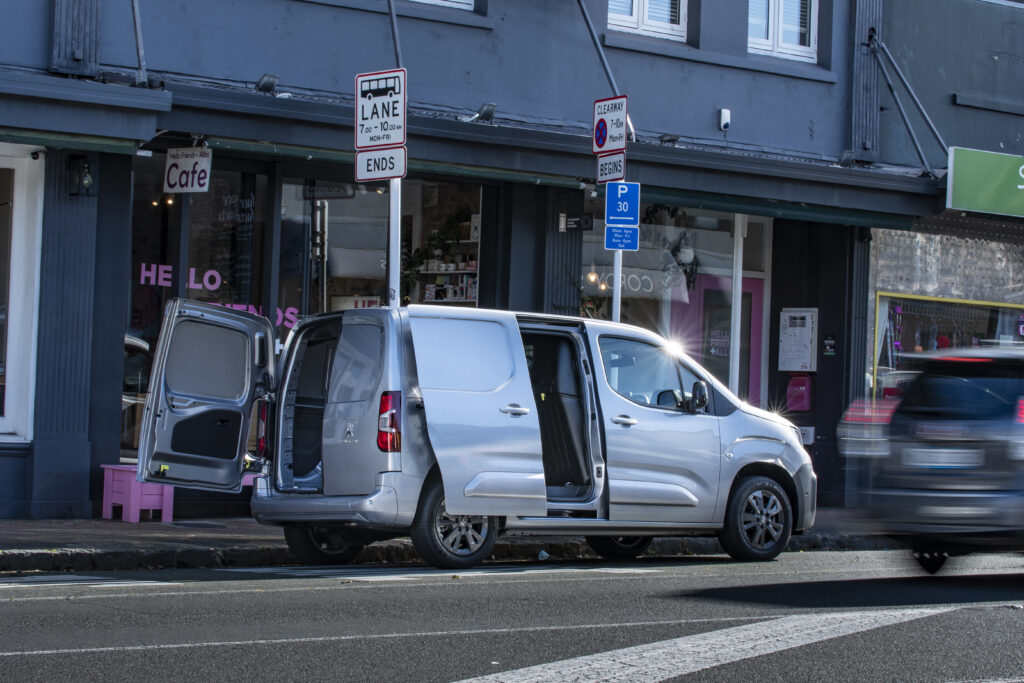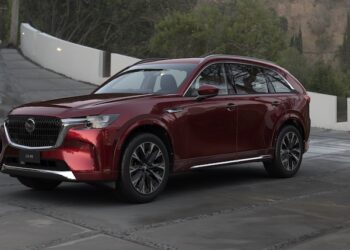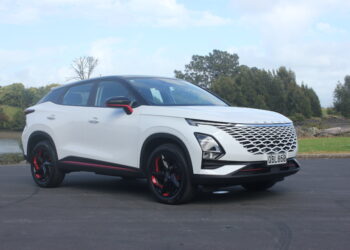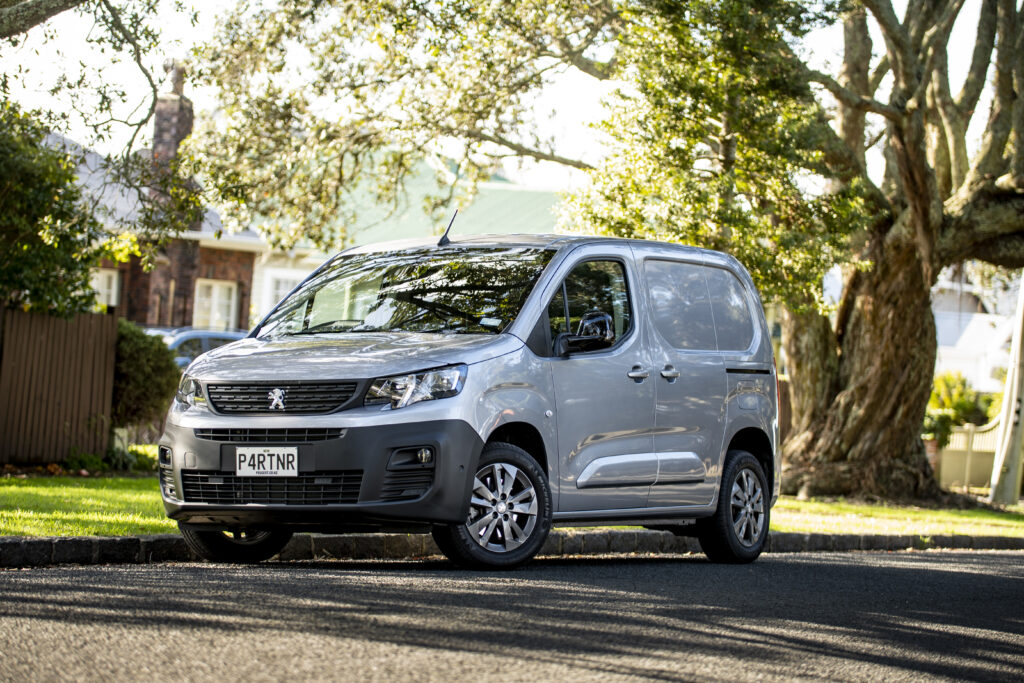
Small delivery vans designed for city use have been around from the early days of motoring.
The foundations for the modern city van were laid after World War 2, with vehicles like the Morris 8 and Minor vans, the Austin A30 van and later the Ford Escort and Morris Marina compact load-carriers.
Modern city vans aren’t common on New Zealand streets and haven’t been for some years.
Holden struggled briefly with the gutless Opel-based Combo which ran out breath even tackling steep hills unladen, Renault had the Kangoo with its weird only-a-mother-could-love-it looks, Peugeot’s cute Partner came and went.
The constant – and the most-successful – has been Volkswagen’s Caddy. But even the short-wheelbase Caddy is a rare sight, though it has the field largely to itself.
But its position is being challenged. Re-enter the Peugeot Partner, with its eyes firmly on dislodging the VW from its perch.
It has a one tonne payload and can tow 1050kg on a braked trailer, so it has the chops to be a useful workhorse and – in terms of onboard cargo-carrying – is a potential alternative to a ute.
It’s not as macho as a pick-up truck and can’t tow as much, but it is a good load toter.
THE RANGE
There are two options – the $45,990 Standard with 2785mm wheelbase and the $48,990 Long with 2975mm between the wheels – both using identical powertrains.
The Standard has a slightly oversquare cargo area 1817mm long and 1550mm wide; the Long’s cargo box is 2167mm by 1550mm, making it the better choice for operators who carry longer items regularly. Both can carry two Euro pallets.
The Partner is powered by the 1.2-litre Peugeot/Citroen Puretec three-cylinder turbocharged petrol motor used also in the French brands’ sedans.
Developing 96kW/230Nm (the latter at a lowish 1750rpm), it’s a strong, willing unit capable of pushing the van to 100km/h in 9.8 seconds which makes it usefully nippy in cut-and-thrust city traffic.
Quoted fuel economy is 6.7 litres/100km and the fuel tank holds 61 litres giving the van a good range between fill-ups. Emissions are 151 grams/km. The Partner is Clean Car scheme neutral, attracting neither a rebate nor a tax.
PRACTICALITIES
The Partner comes with twin rear barn-style doors that are windowless. Combined with the lack of side panel glass, that means the load is hidden and the driver must rely on the door mirrors and the excellent reversing camera to see what’s happening behind the van.
There is a conventional interior rearview mirror, but it delivers a view of…well, nothing realty. It’s there presumably because it houses sensors for the van’s safety and driver aid systems.
Speaking of the reversing camera, it’s crystal-clear with static and dynamic guidelines and is one of the most accurate I’ve used, making the van especially easy to back and park.
The door mirrors are vertically-oriented, and provide an excellent view.
There are sliding doors on each side of the load area and the load height is low making cargo-handling easy.
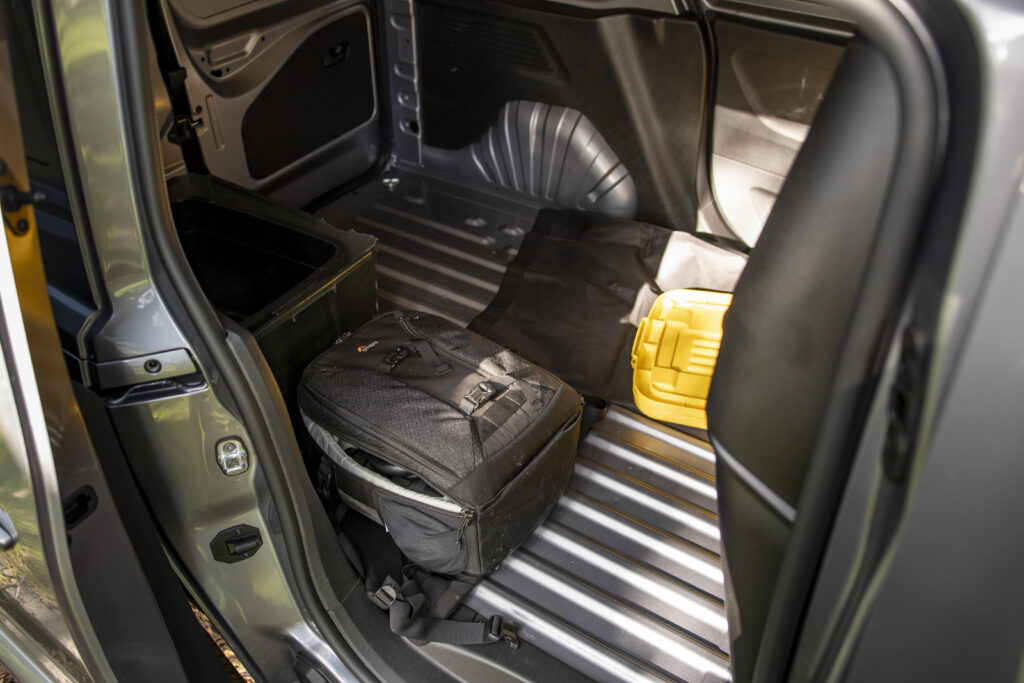
The Partner is fitted with what Peugeot calls Multiflex which consists of a two-seat passenger bench with folding outer seat, which allows for a pivoting writing table on the central seat.
In addition to 113 litres storage volume in multiple compartments, there’s an additional large area under the central seat. Large items like laptops and 1.5-litre drink bottles can be stored in various cubbyholes.
A load-through hatch in the bulkhead, together with a load protection cover, complete the interior fit out.
IN THE CABIN
Instrumentation is clear and easy to read and is housed in a pod that sits above the near-oblong shaped steering wheel.
The driver’s seat is adjustable for height and there is an excellent view through the large windscreen.
The steering wheel is mounted relatively low, below the instruments and its positioning takes a little getting used to.
Standard equipment includes air-conditioning, front and rear parking sensors, multi-function onboard computer, electrically adjustable and heated auto-folding door mirrors, electrically-wound windows, electric parking brake and reach- and rake-adjustable steering wheel.
Information is displayed on an eight inch touchscreen, and the good sound system has four speakers, though we found the volume control a bit fiddly.
The air-conditioning works well though the rotary dial to adjust temperature relied on small numbers and getting the right level of cool or warmth was a bit hit-and-miss on the move.
There are USB and 12V sockets, and the Partner is Bluetooth, Apple CarPlay and Android Auto compatible.
In-cabin storage includes an upper glovebox compartment, an overhead storage shelf and cubbies in the dashboard.
A bulkhead with fixed window separates the cabin from the cargo area and provides occupants with protection against shifting loads.
THE DRIVE
The eight-speed auto is smooth shifting and responsive left in Drive but can be operated manually, using steering column-mounted paddle shifters.
I found little need for the latter aside from when I needed a quick power boost, the gearbox making good choices when left in Drive.
Handling is predictable and vice-free, with mild understeer predominating. The Partner isn’t quite as nimble as a small hatchback car but it’s still entertaining to drive – and the 205/60 R16 tyres provide strong grip on dry and wet surfaces.
The eight-speed auto combines with the characterful exhaust note to deliver an enjoyable soundtrack during full throttle acceleration.
Standard wheels are 16-inch steel which is a practical choice for a working van; the test vehicle was fitted with optional 16-inch alloys which come as part of a $2500 options pack.
The pack also includes body-coloured rear bumper, side rubbing strips and exterior door handles, and gloss black door mirror shells.
The Partner rides well, even unladen, and the body feels tight and well put-together. The driver’s seat is comfortable, and a two-passenger bench seat is standard.
SAFETY
Safety equipment includes six airbags, active emergency braking with pedestrian detection, forward collision warning, traffic sign recognition, lane departure warning, blindspot monitoring, and traffic sign recognition.
Peugeot NZ’s mantra is that the Partner is equipped with everything an operator needs without having to balloon the price tag with options.
It comes with a five year/100,00km warranty and five years roadside assistance; extended warranties and service plans are available at added cost.
OUR VIEW
Peugeot’s Partner is a practical workhorse for operators who carry cargo with compact dimensions. Its windowless cargo area gives a measure of security, keeping the load away from prying eyes.
It will swallow a large amount of gear and tote up to 1000kg; loading is easy through rear and dual side doors, and driver access to the cab is car-like.
The Partner is easy to handle, with good lock and manoeuvrability, a 10.8m turning circle (11.4m on the long-wheelbase), nicely balanced steering and a responsive gearbox matched well to the engine’s power and torque curves.
It’s a worthy rival for the market dominating VW Caddy.
